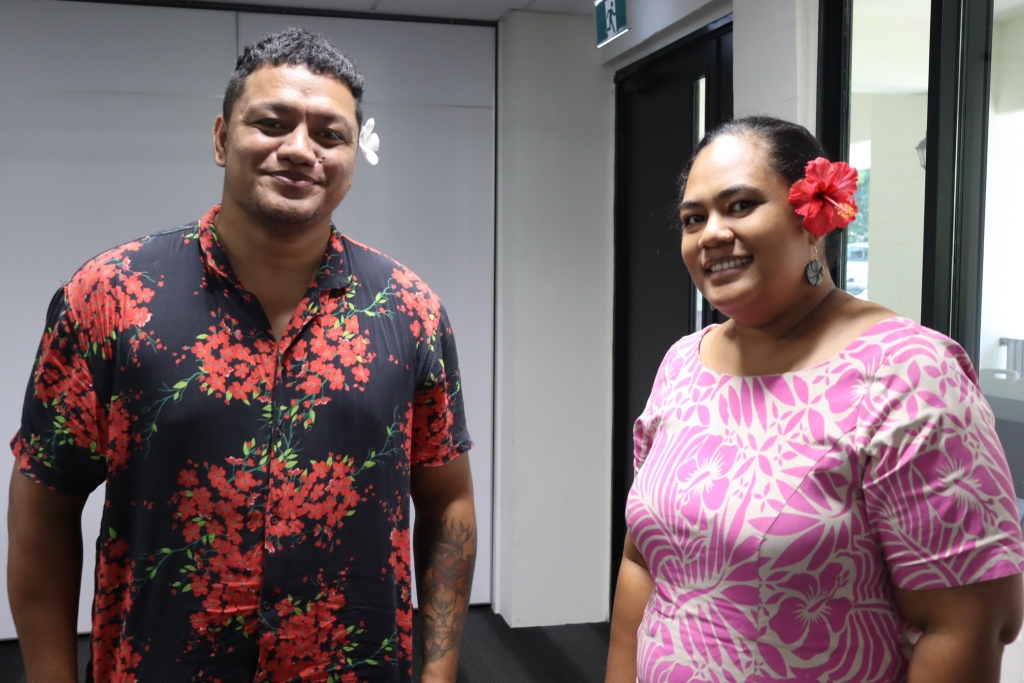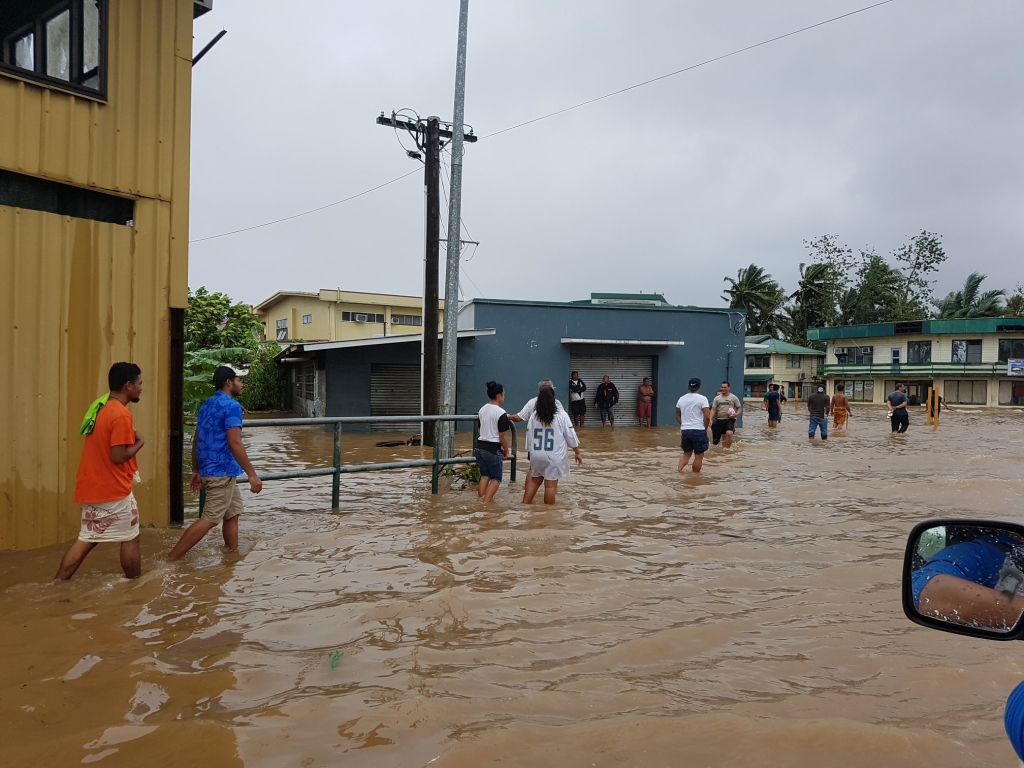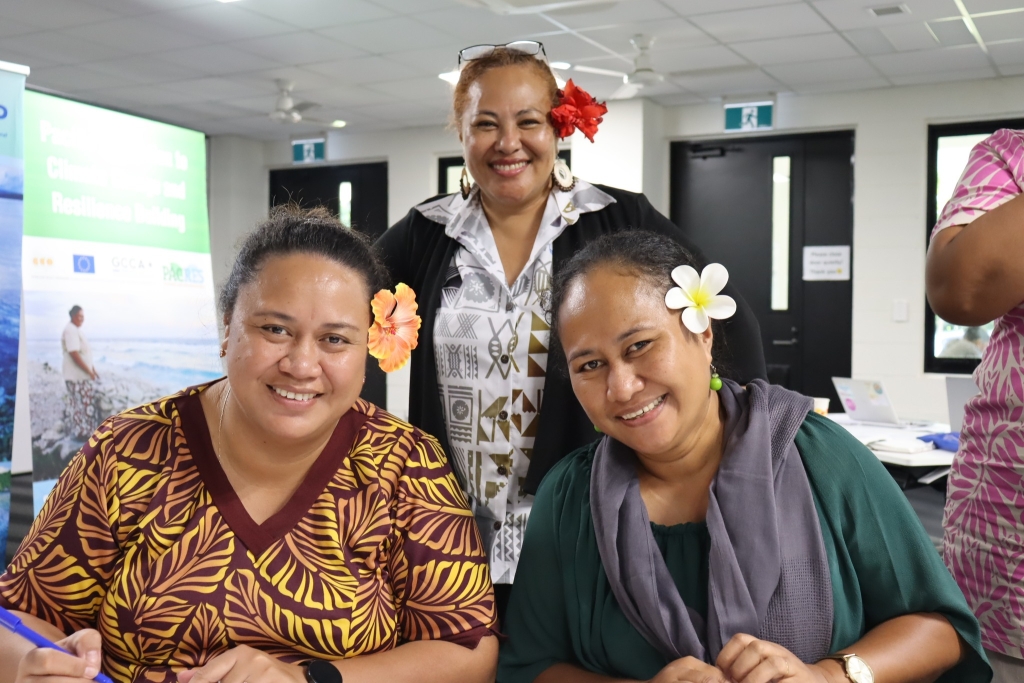
26 March 2024, Apia Samoa - Samoa is amongst the first countries to contribute and shape a critical new project designed to assist Pacific countries who are already dealing with Loss and Damage (L&D) from climate change impacts. These impacts include slow onset events such as sea level rise and temperature change or those caused from extreme events such as cyclones, floods and heatwaves.
At Vailima, the home of the Secretariat of the Pacific Regional Environment Programme (SPREP), key knowledge stakeholders and experts in climate change from Samoa were introduced to the Building Our Pacific Loss and Damage Response Project (BOLD Response), one of the first loss and damage focused projects in the Pacific on Monday.
The BOLD Response Project, a six-year project funded by the International Climate Initiative in Germany, aims to strengthen Pacific island countries' resilience to climate-related loss and damage. The project will be implemented in Republic of Marshall Islands, Samoa, Tuvalu, Vanuatu and Fiji.
The Stakeholder Consultation is one of a series of BOLD-related mission meetings taking place in Samoa this week.

Ms Elisapeta Areta, Acting ACEO for Climate Change & GEF of Samoa’s Ministry of Natural Resources and Environment (MNRE) said the BOLD Response Project is of high importance to Samoa’s work to advance our understanding of, and response to, climate-induced loss and damage.
“As the impacts of climate change become more pronounced, and we reach limits to adaptation which cannot be overcome, addressing loss and damage will become increasingly relevant for our region and for Samoa,” said Ms Areta.
“The project will support our sectors and agencies build capacity on loss and damage, strengthen the evidence base for loss and damage to assist in planning and forecasting future impacts, define and better respond to non-economic loss and damage including impacts to our wellbeing, cultural heritage and relationship with the land and build a national programme of loss and damage activities and priorities with a view to accessing financing through the new Loss and Damage Fund.”
During the consultation, participants were given a brief on the subject of Loss and Damage which was first introduced to the UN Climate Negotiations by Vanuatu in 1991, on behalf of the Alliance of Small Island States, proposing the creation of an insurance scheme for countries likely to be impacted by climate change such as rising sea-levels. Since then, loss and damage has been a continuous priority for Pacific countries with a major breakthrough coming in 2022 with the establishment of the Loss and Damage Fund at COP27. At Dubai in COP28, the historical agreement on the capitalisation of the Loss and Damage Fund was hailed as a major victory by Pacific countries.
But there is still a lot of work to be done, and the BOLD project is a key step for Pacific countries.

SPREP’s Climate Change Advisor, Mr Tim Breese , welcomed the next steps and reminded that loss and damage is already a ‘lived reality’ for Pacific countries and as such, it will continue to be a top priority.
“The plight of the Pacific when it comes to the climate crisis is no longer a secret and this work is so important for the survival of our Pacific communities,” he said.
A core focus of the BOLD Response Project will be on supporting communities in addressing non-economic losses. By enabling Pacific countries integrate loss and damage considerations in their national planning, the project has the potential to safeguard important economic and non-economic values.

During the consultations, MNRE’s representative encouraged stakeholders in Samoa to contribute to ensure the project reflects Samoa’s sectors and community priorities.
“While the conversations you have today on loss and damage may be difficult, it is important we have these discussions now to ensure we are informed, have appropriate plans in place and are well positioned to access climate finance to effectively address loss and damage.
“There is a lot of work ahead, but we are glad to see the global recognition of loss and damage in the Pacific, and look forward to the outcomes of this project which will strengthen our capacity to address loss and damage in Samoa.”
For more information on the BOLD Project, contact: [email protected]
Empowering our Pacific News Media: Loss and Damage Media Brain Bites
Loss and Damage are the harms caused by climate change impacts that occur despite, or in the absence of, mitigation and adaptation. Loss and Damage is caused by both sudden and slow onset climate events including tropical cyclones, sea level rise, droughts, floods and ocean acidification and salinisation.
The Types of Loss and Damage:
1. Economic: Income, infrastructure, houses, jobs
2. Non-Economic: culture, health, spiritual, mental, traditional knowledge, biodiversity, identity, social cohesion, loss of life
Photo Credit of disaster images: Samoa Disaster Management Office